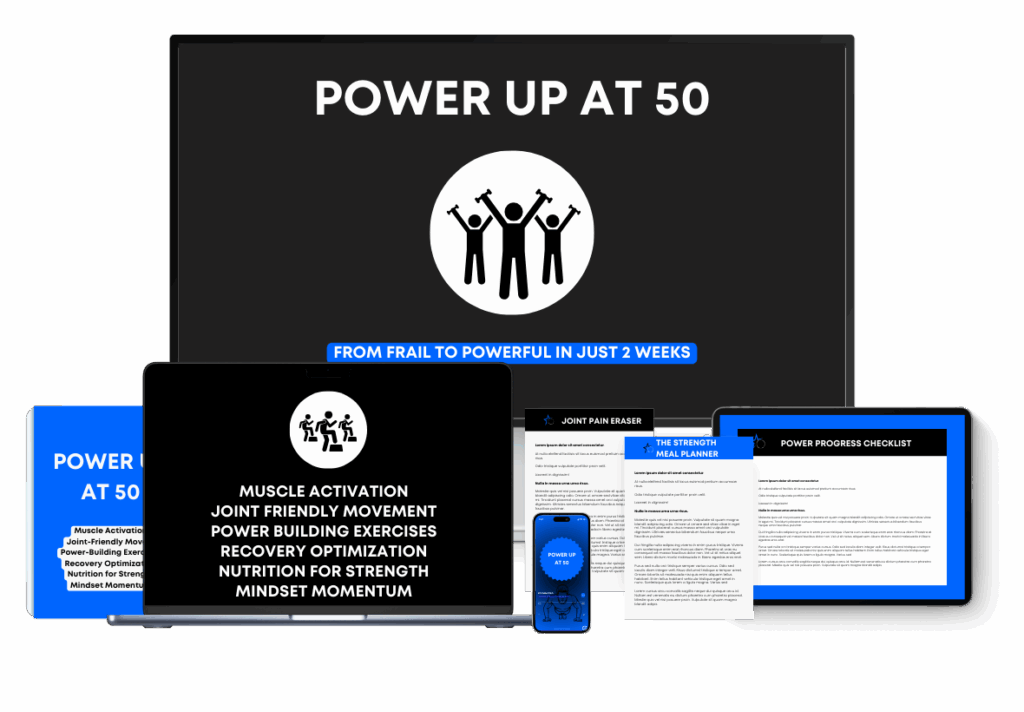Many men notice that it’s harder to keep off extra pounds as they get older. Changes in metabolism and daily habits can make maintaining a healthy weight feel more challenging. You can manage your weight better by understanding how your metabolism works and making small changes to your routine.
You might not realize that even small shifts in your eating or activity level can have a big impact. Simple steps like staying active, eating balanced meals, and avoiding extreme diets can support your metabolism and help you stay at your best.
Learning how your body burns calories and stores energy will help you make better choices each day. Making these changes is possible for anyone, and it can help you feel stronger and more confident as you age.
Understanding Weight Gain and Metabolism Changes in Men
As you get older, your body shifts in all sorts of ways. Metabolism slows, hormone levels shift, and your risk for health problems can climb.
How Age and Genetics Influence Metabolism
Age and genetics both shape your metabolism. As the years add up, you lose muscle and gain fat—muscle burns more calories, so metabolism naturally slows.
If your family tends to have a slower metabolism or gain weight easily, you might see changes sooner or more noticeably. You can’t pick your genes, but knowing your family’s health story helps you plan smarter.
Metabolic rate drops with age, so you burn fewer calories at rest than you did in your twenties. Even if your diet and habits stay the same, weight gain sneaks up more easily.
Hormonal Shifts and Their Impact
Hormones run a lot of the show, including metabolism. As you age, testosterone levels may dip. Lower testosterone usually means less muscle, more fat, and a slower metabolism.
Poor sleep or stress can mess with hormones like cortisol, making you crave fatty or sugary foods. These shifts make gaining weight easier and losing it trickier.
Keeping hormones balanced matters. Regular exercise and good sleep are two of the best things you can do.
Aging and The Risk of Health Problems
Getting older raises your chances of health problems tied to weight gain and a slower metabolism. Carrying extra weight bumps up your risk for type 2 diabetes, heart disease, and high blood pressure.
A slower metabolism makes gaining weight easier and losing it tougher. That can pile on other issues, like joint pain or trouble sleeping.
Eating well and staying active lower these risks. Don’t skip regular check-ups—they help you spot problems early.
Diet and Nutrition Strategies for Managing Weight
Managing your weight really comes down to steady, realistic changes in your diet. What you eat—and when you eat—shapes your metabolism and energy.
Choosing Healthy Fats and Whole Grains
The fats and grains you pick matter a lot. Healthy fats—think avocados, nuts, seeds, olive oil—beat out the saturated and trans fats in fried foods, butter, and packaged snacks.
Whole grains like brown rice, quinoa, oats, and whole wheat bread give you steady energy. They’re loaded with fiber, which fills you up and helps with weight loss. Fiber also keeps blood sugar stable and supports digestion.
Try swapping white rice for brown, or use whole wheat pasta instead of regular. For snacks, grab a handful of nuts instead of chips. These swaps support your metabolism and help lower diabetes risk.
Balancing Calories and Nutrients
Your body needs a good balance of calories and nutrients to run well. If you want to lose weight, you might need to eat fewer calories than you burn—but it’s less about eating less and more about eating smarter.
Fill half your plate with veggies and fruit. Add lean protein like chicken, fish, or beans, plus healthy fats. Here’s a simple way to balance your meals:
| Food Group | Examples | Portion |
|---|---|---|
| Vegetables | Broccoli, carrots, salad | Half plate |
| Protein | Chicken, tofu, eggs | 1/4 plate |
| Whole Grains | Brown rice, oats | 1/4 plate |
| Healthy Fat | Nuts, olive oil | Small amount |
Sticking to these portions helps your metabolism work better, making weight management a bit less of a headache.
Managing Glucose Levels and Meal Timing
Keeping your glucose levels steady matters for weight control and lowering diabetes risk. Eating big meals or skipping them can make your blood sugar swing, leaving you tired or cranky.
Try eating at regular times each day—don’t go more than four hours without food. Choose foods high in fiber, like beans and veggies, to slow down how fast sugar hits your blood.
Small snacks, like an apple with peanut butter or carrots and hummus, help keep blood sugar even. Water instead of sugary drinks also helps prevent spikes.
What and when you eat both matter. Paying attention to these can really support your metabolism and make weight maintenance less of a struggle.
Optimizing Physical Activity and Exercise Habits
Staying active as you age helps prevent unwanted weight gain. The right exercise mix can boost your metabolism, keep your muscles strong, and help you burn more calories.
Incorporating Cardio and Strength Training
Both cardio and strength training matter for weight management. Cardio—like brisk walks, jogging, or cycling—gets your heart rate up and burns energy. Aim for at least 150 minutes of moderate-intensity aerobic activity each week.
Strength training builds and maintains muscle, which burns more calories even when you’re sitting still. Do exercises like push-ups, squats, or weight lifting twice a week.
Mixing cardio and strength keeps things balanced. Alternate days, or combine them in one session if that’s your style. This combo helps control body fat and keeps your metabolism humming.
Maintaining Lean Body Mass
As you get older, you lose muscle—a process called sarcopenia. That slows your metabolism and makes gaining fat easier. Regular strength training and enough protein help you hang onto muscle.
Try progressive overload—gradually increase weights or reps. Use both bodyweight and resistance equipment. A simple plan: three sets of 8–12 reps for the big muscle groups.
Don’t skimp on recovery. Give each muscle group at least 48 hours between tough sessions. Staying consistent really is the secret to keeping lean mass and fighting off muscle loss.
Adapting Exercise for Different Life Stages
Your exercise needs change as your body and life change. Guys in their 20s and 30s might go for high-intensity workouts or team sports. In your 40s and beyond, joint-friendly options like swimming, walking, or biking often work better.
Busy with work or family? Short, focused workouts—like a 20-minute circuit—can help you stay active. As you age, adding flexibility and balance moves (think yoga or tai chi) helps lower your injury risk.
Watch your energy, recovery time, and comfort. If you notice joint pain or lingering fatigue, adjust your routine. Being flexible keeps you moving, no matter your age or schedule.
Lifestyle Changes and Reducing Health Risks
Healthy habits can help you avoid weight gain and lower your risk for diseases like cancer or heart disease. Stress, stigma, and poor routines can make weight creep up, but even small changes can make a real difference.
Managing Stress and Addressing Stigma
High stress raises cortisol, which encourages fat to build up around your belly. It also makes you more likely to reach for junk food or skip workouts.
Manage stress with regular exercise, talking to friends, or spending time on hobbies. Make time for relaxation, deep breaths, or even a short walk outside.
Dealing with weight stigma can zap your confidence and push you away from healthy habits. If you feel judged, try connecting with supportive groups or a counselor. Your health isn’t just about the number on the scale.
Preventing Obesity and Chronic Diseases
Obesity raises your risk for serious stuff like heart disease, stroke, and some cancers. Body Mass Index (BMI) gives a general idea if your weight is in a healthy range, but it’s not the whole story.
You can head off obesity by:
- Eating more veggies, fruits, and lean proteins
- Cutting back on sugary and fatty foods
- Keeping portions in check
- Staying active most days—brisk walks, swimming, cycling, whatever works for you
Getting enough sleep and managing stress also help. If you notice the scale creeping up, small tweaks to your diet and activity can usually get you back on track.
Maintaining a Healthy Weight Over Time
Keeping your weight steady as you get older? That can take some planning. Metabolism tends to slow down with age, so you might not burn calories like you used to.
If you want to stay at a healthy weight, balance the calories you eat with the ones you burn. Try checking your weight and waist size every few months—no need to obsess, just keep an eye on things.
Building routines helps a lot. Meal prepping, stashing healthy snacks at home, and mixing cardio with strength exercises can make a real difference.
You may be interested in our own program, Power Up After 50. It includes a full 30 day program of easy to do exercises within the comfort of your own home and a 28 day meal planner to ensure each day you get the correct nutrition. It’s a program specifically designed for men over the age of 50 and you can check out the details here.











